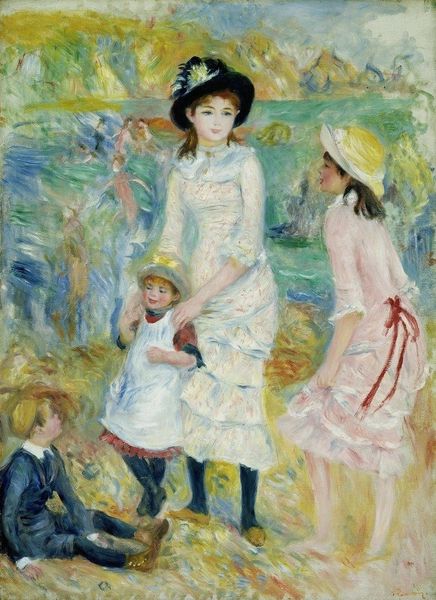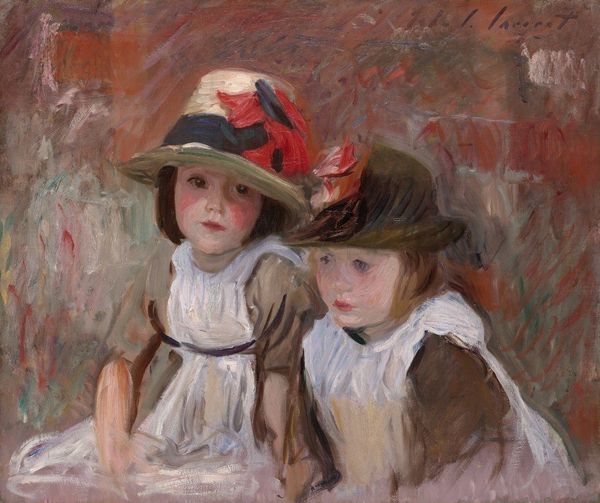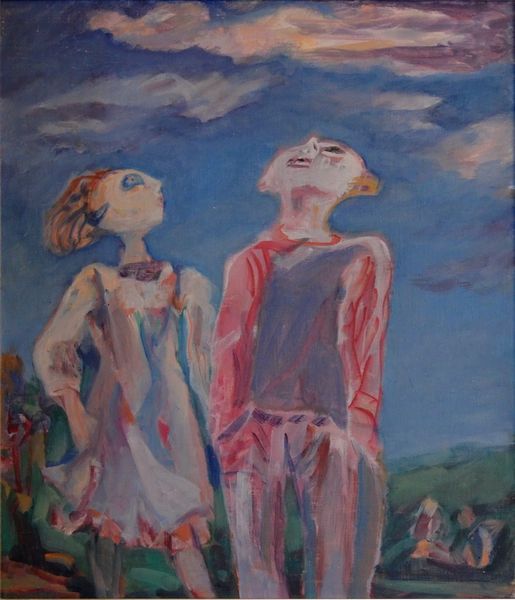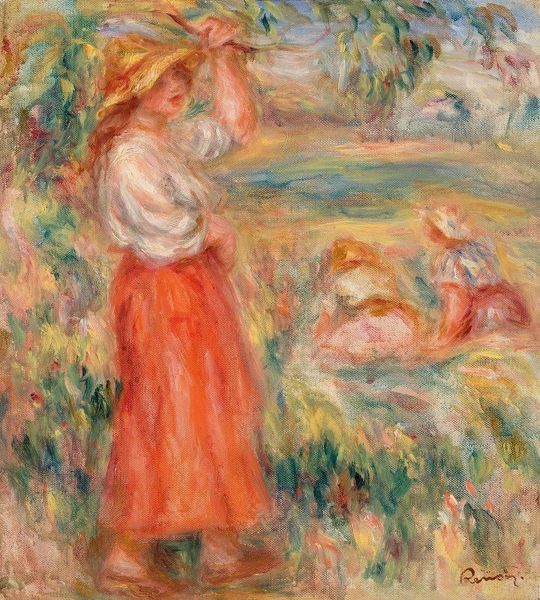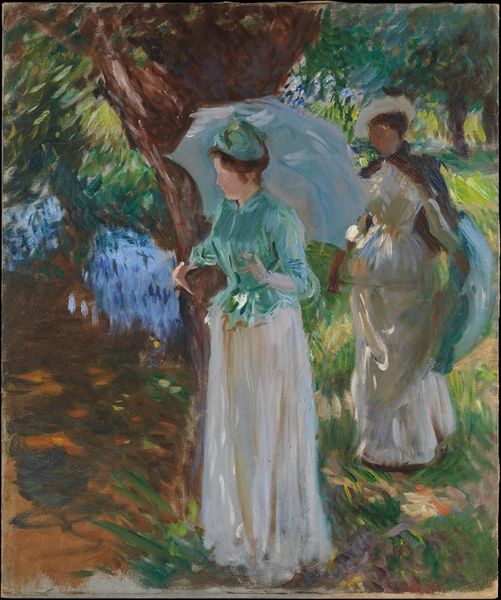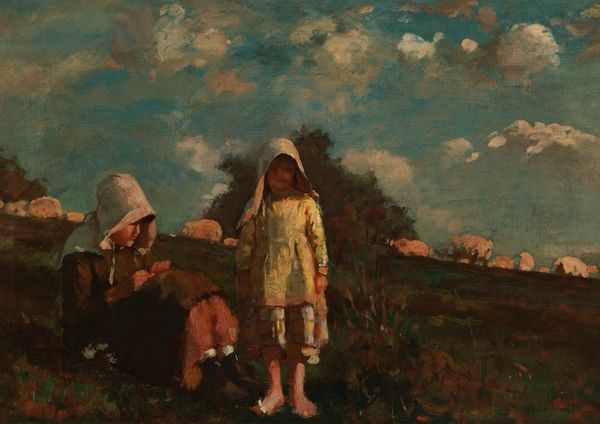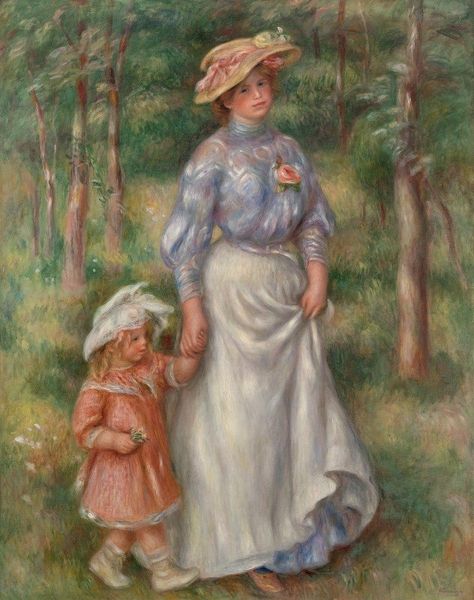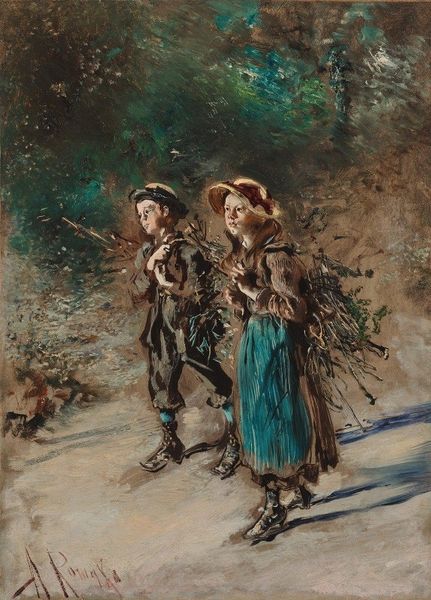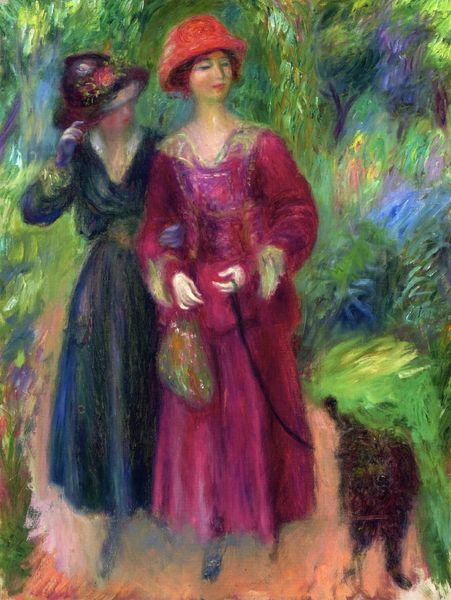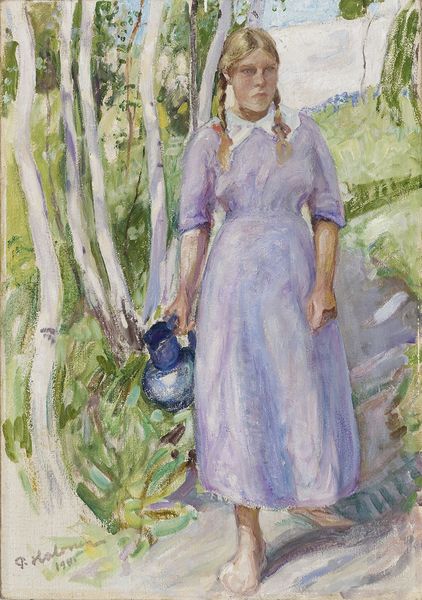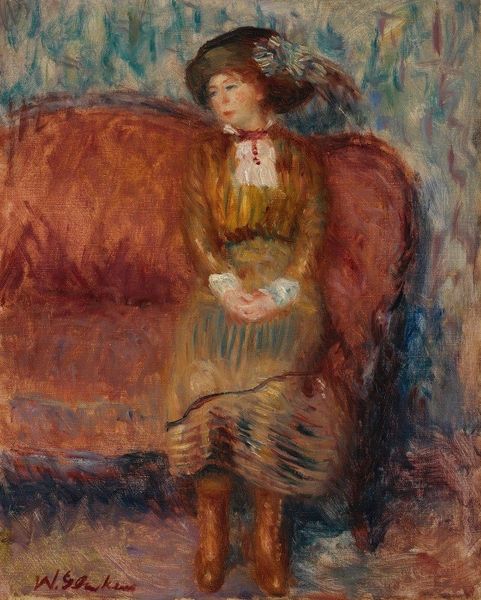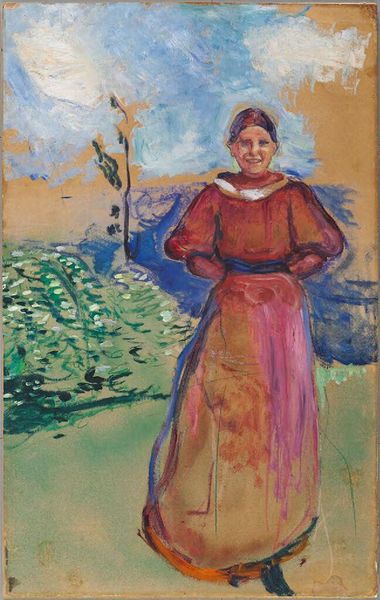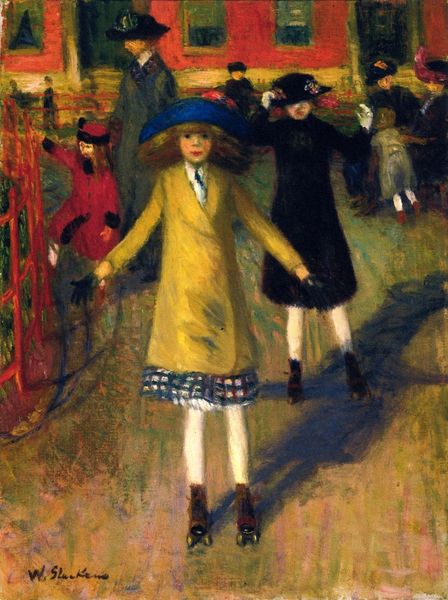
Copyright: Public domain
Editor: Here we have Claude Monet's "The Promenade (study)" from 1886, rendered in oil paint, probably en plein air, judging from the light. The figures seem to float a bit, like a dream. How would you interpret this work? Curator: Thinking materially, consider the context: Monet's vibrant brushstrokes aren't just aesthetic choices; they are the literal application of pigment manufactured, distributed, and sold within a burgeoning industrial system. The promenade itself becomes a site of leisure enabled by the social changes of the late 19th century, including new access to consumer goods for the middle class. How does the application of paint affect the subject's portrayal here? Editor: I see. So, the visible brushstrokes aren't just about capturing light, they're also a sign of a changed production, making and consumer landscape. Are you suggesting that Monet's style mirrors the increased mechanization of art production itself? Curator: Exactly! It forces us to confront the means of production of the artwork itself and of the social conditions allowing these kinds of leisure activities in the first place. Consider also the female subject and who could afford her attire. It wasn’t a painting for just everyone to possess at the time it was created. Editor: That's fascinating. I hadn’t considered how deeply connected the subject of leisure is with the means of production. Thank you for this viewpoint! Curator: My pleasure. Thinking about the material and the social context provides a fuller experience and offers new interpretations to seemingly straightforward art.
Comments
No comments
Be the first to comment and join the conversation on the ultimate creative platform.
